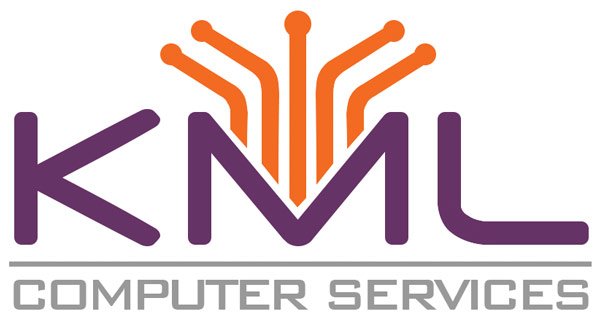
An IT infrastructure audit is a systematic review of your environment. It helps identify risks, inefficiencies, and opportunities for improvement across hardware, software, networking, and cabling systems. As businesses expand or relocate, they often inherit messy server rooms, outdated wiring, and patchwork setups that cause unnecessary downtime. These problems not only impact productivity but also create serious security risks.
The Business Impact of Structured Cabling and Audits
At KML Computer Services, we’ve seen firsthand how a poorly designed infrastructure can hold companies back. For example, a tangled cabling mess in a server room can cost IT staff hours every month in troubleshooting. Conversely, a structured cabling system with labeled drops, organized racks, and scalable design makes it simple to expand or troubleshoot, saving time, money, and frustration.
In 2025, the need for IT audits is even more urgent. With more businesses adopting cloud applications, IoT devices, VoIP systems, and remote connectivity, the pressure on infrastructure has never been greater. Organizations must ensure their networks are future-proof, compliant with modern security standards, and capable of supporting growth.
This guide will walk you through how to audit your IT infrastructure with a special focus on low voltage cabling, the silent foundation that keeps everything else running. Along the way, we’ll share real-world examples of how KML has helped clients like 303 Associates and M. Shapiro Real Estate Group strengthen their operations through cabling and infrastructure upgrades.
What is an IT Infrastructure Audit?
Think of an IT infrastructure audit as a health checkup for your business technology. It’s a structured review to ensure all critical systems, from cabling and networking hardware to backup solutions and security, are performing efficiently and securely.
During an audit, each component of your environment is examined:
- Physical Infrastructure: Low voltage cabling, racks, patch panels, and server rooms. These are the highways that carry your data.
- Networking Equipment: Firewalls, switches, and access points are checked for performance, configuration, and age.
- Security Systems: CCTV cameras, alarms, and access control, all of which depend on cabling.
- Software and Licensing: Ensures you’re not overspending on unused or duplicate licenses.
- Data Backup and Recovery: Tests whether backups are secure, tested, and capable of restoring business continuity.
The goal is not only to find what’s broken but also to highlight opportunities for efficiency, cost savings, and scalability. For example, replacing outdated cabling can reduce downtime and interference issues, while reorganizing a server room makes future expansions much easier.
Companies often assume that if systems are “working,” there’s no need to evaluate them. But hidden risks like unsecured cabling, outdated firewalls, or neglected backups can cause catastrophic failures. Regular audits prevent these issues and ensure that your IT environment is reliable, compliant, and ready for growth.
The Hidden Importance of Low Voltage Cabling in IT Audits
When most people think about IT infrastructure, they picture servers or Wi-Fi. What often goes unnoticed, yet plays the most critical role, is low voltage cabling.
This wiring powers internet, phone systems, CCTV, access control, and automation like lighting or HVAC. Unlike high voltage electrical wiring, it carries data and communication signals, making it safer, more efficient, and essential for business operations. A well-designed cabling system ensures reliable connections, faster speeds, and flexibility for growth.
During an audit, the condition of cabling is one of the first areas we evaluate. Are the cables labeled? Are they bundled neatly, routed properly, and terminated correctly? Or are they tangled, unlabeled, and crammed into a server closet? Poor cabling leads to dropped connections, interference, wasted troubleshooting hours, and even fire hazards.
Take 303 Associates in Beaufort, SC, a real estate investment and redevelopment company that has been in business for 27 years. By auditing and improving their cabling, KML provided clean, organized drops to tenant offices and rooms, ensuring consistent service for each new tenant.
Investing in structured cabling isn’t just about cleaning up a closet, it’s about building a future-proof backbone for your entire business.
Step-by-Step Guide to Auditing IT Infrastructure
Now that we’ve covered why audits matter and what they involve, let’s move into the practical steps.
Step 1: Assess Physical Infrastructure
The foundation of every IT system is physical cabling, racks, patch panels, and server rooms. This step evaluates whether your cabling is properly installed, organized, and labeled. An audit often uncovers outdated wiring that can’t support today’s bandwidth demands or server rooms that pose hazards due to poor management.
KML recently transformed a client’s server room from chaos to order. Before the audit, the cables were tangled and unlabeled, causing constant downtime. After reworking the system into a structured, labeled setup, the client gained faster troubleshooting and a scalable infrastructure for future needs.
Step 2: Review Network & Security Systems
Next, the audit examines active networking and security equipment: firewalls, switches, wireless access points, and CCTV. Are they configured properly? Are they secure and up to date?
Many of these rely on low voltage cabling. For example, cameras often use Power over Ethernet (PoE), requiring both data and power through a single cable. KML frequently designs systems with secure firewalls, WAPs, and surveillance cameras, all powered by properly terminated cabling, ensuring smooth rollouts with no blind spots.
Step 3: Analyze Data & Backup Systems
Backups are only useful if they work. An audit checks whether backups are being performed regularly, securely, and tested for restoration. Too many companies assume backups are safe, only to discover failures during a crisis.
A strong cabling system ensures quick recovery by reducing downtime during outages. At KML, we integrate IntelleBACKUP into audits, giving businesses a reliable way to safeguard data and ensure business continuity.
Step 4: Evaluate Software & Licensing
Software audits identify duplicate or unused licenses, saving companies money. For example, many businesses pay for extra Microsoft 365 licenses they no longer use. An audit not only reduces waste but ensures compliance with vendor agreements.
Step 5: Test Business Continuity & Disaster Recovery
Finally, an audit tests your resilience. What happens if your internet goes down? If a server fails? Or if a natural disaster strikes? By running scenarios, businesses can uncover weaknesses and ensure both cabling and systems support continuity.
Real-World Case Studies: How KML Clients Benefit
To show the value of these audits in action, let’s look at a few client examples where structured cabling and infrastructure improvements made a measurable difference.
303 Associates
Managing office spaces in Beaufort, SC, requires frequent tenant turnover. KML delivers structured cabling that ensures each new tenant gets reliable service from day one.
M. Shapiro Real Estate Group
KML overhauled racks, installed patch panels, and delivered organized cabling systems for workstations and printers. Even when old wiring created challenges, structured cabling created a safe, reliable environment for staff.
Documenting and Maintaining Audit Results
A proper audit doesn’t end with fixes, it includes documentation. Photos (before/after), labeling, and diagrams ensure clarity for future growth. At KML, we can also provide monthly maintenance service reports, so clients always know the status of their systems.
Well-documented cabling reduces maintenance costs, accelerates troubleshooting, and minimizes downtime.
Common Problems IT Audits Uncover
- Unorganized cabling (a fire hazard and productivity killer).
- Outdated firewalls and switches.
- Single points of failure in the network.
- Non-compliant CCTV systems.
- Overpaying for unused software licenses.
- Weak or untested backup strategies.
Why Outsource Your IT Infrastructure Audit?
Most businesses don’t have the time or expertise to perform a thorough IT audit. Outsourcing ensures that experts review your cabling, security, and systems with an unbiased eye.
KML brings expertise across cabling, networking, cybersecurity, VoIP, and CCTV, with vendor management included. Our proactive approach helps clients avoid costly downtime and security risks.
How KML Computer Services Helps
With solutions like IntelleMANAGE, IntelleBACKUP, and IntelleCCTV, KML offers more than just audits, we provide ongoing peace of mind. From cabling to cameras, firewalls to help desk support, we ensure your infrastructure is reliable, scalable, and secure.
Our before-and-after server room projects demonstrate the transformation from chaos to control. And our low voltage cabling projects for clients like 303 Associates and M. Shapiro Real Estate Group shows our ability to design infrastructure that stands the test of time.
Build a Strong Foundation for Growth
Low voltage cabling may be invisible, but it’s the most important part of your IT infrastructure. Without it, your business risks downtime, inefficiency, and security gaps.
An IT infrastructure audit identifies vulnerabilities, improves performance, and prepares your company for the future. By working with KML, you gain a partner who understands how to transform disorganized, outdated setups into clean, scalable, and secure systems.
If you’re planning a new build, expansion, or simply want peace of mind with your existing setup, contact KML Computer Services for a full IT infrastructure audit. We’ve helped organizations like 303 Associates and M. Shapiro Real Estate strengthen their IT backbones, and we can do the same for you.
Mark Rossi is president of KML Computer Services. Since 1996 he has been immersed in the technology field, working in various positions, from hardware technician and network manager to network engineer and IT consultant.

